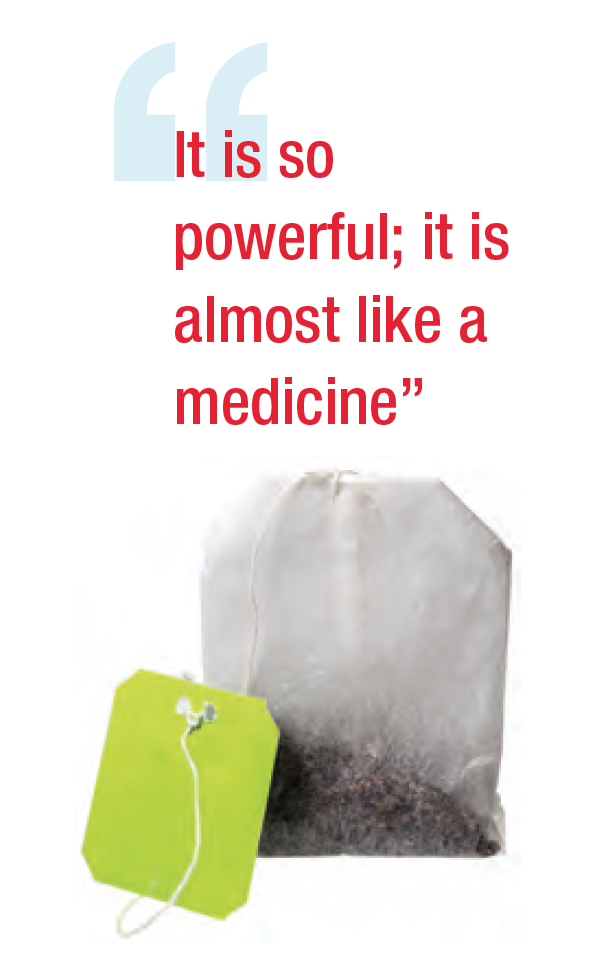By Lisette Hilton; Reviewed by Peter A. Lio, MD
Peter A. Lio, MD, has published extensively on simple things dermatologists can do improve patient outcomes and satisfaction. These are among his tips.
The literature offers 2 or 3 evidence-based treatment options for many of today’s most frustrating dermatologic conditions, such as atopic dermatitis. When those do not work, do not work well, or are not accessible, what does the dermatologist do?

“We want to try and stay conventional and evidence-based whenever we can. But we are forced frequently to think outside the box,” said dermatologist Peter A. Lio, MD, clinical assistant professor of dermatology and pediatrics at Northwestern University Feinberg School of Medicine, Chicago.
Dr. Lio has published several papers on treatment approaches and tips that help dermatologists help patients whose outcomes with traditional treatments have been less than optimal. These and other simple strategies send a clear message to patients that dermatologists are not giving up on them, he said.
Moisturizers’ role in skin barrier repair and how to get kids to use them
Dermatologists generally are comfortable with the concept that moisturizers are helpful and necessary for a variety of skin conditions.
The skin barrier’s microbiome, chemical, physical, and immune functional layers are needed to maintain skin integrity, according to a paper by Dr. Lio and coauthors published June 2019 in Journal of Drugs in Dermatology (https://jddonline.com/articles/dermatology/S1545961619P0581X).1
Moisturizers can help maintain and restore the skin barrier to help prevent allergic sensitization, allergic sensitization, and contact dermatitis, they wrote.
It gets dicey when dermatologists are faced with the dilemma of which moisturizer to recommend.
“In an ideal product, each aspect of the skin barrier would be considered. Attributes such as avoiding preservatives that can damage the microbiota while perhaps even having pre- or probiotics to support the microbiota; using pH-neutral and gentle ingredients to support the chemical layer; combining occlusives, humectants, and emollients for the physical barrier; and avoiding fragrance and common allergens and irritants to minimize the chance for immune activation are all desirable and should be considered when evaluating a potential moisturizer,” the authors wrote.
But even the best products work only when patients use them correctly. Dr. Lio said he often sees children, especially, with eczema who refuse to put anything on their skin because they say everything burns.

One of his outside-the-box tricks to get them to see that not everything burns is to get a placard and put dollops of different moisturizers on it.
Wearing gloves, Dr. Lio will put a tiny bit of each of the moisturizers on the child’s arm or hands, with parents watching. He asks, “How does this one feel?” When and if the child says one of the moisturizers feels good, Dr. Lio, celebrates having a winner and gives the parent or child a sample.
The approach works and helps build a bond with patients, he said.
Don’t forget the forgotten “colorful” therapies
In a review analyzing mechanisms, applications and adverse effects of colorful dyes, including Castellani’s paint, gentian violet, potassium permanganate, as well as vibrant topical creams vitamin B12 and indigo naturalis, Dr. Lio and coauthors help make what is old new again (https://link.springer.com/article/10.1007%2Fs40267-019-00665-1).2
Castellani’s paint, gentian violet, and potassium permanganate were once common, studied, efficacious topical treatments for cutaneous infections.
“Moreover, topical vitamin B12 and topical indigo naturalis creams for atopic dermatitis and psoriasis have been extensively studied through multiple controlled trials and may also be effective, with minimal adverse effects,” wrote authors of the review, published August 9, 2019 in Drugs and Therapies Perspectives.
Sometimes, thinking outside the box means picking an old box, according to Dr. Lio.
“These treatments still have purpose and can serve certain patients in certain situations,” he said.
Gentian violet, for example, is anti-yeast and anti-fungal. Dr. Lio often uses it to treat oral thrush or intertrigo. The same goes for Castellani’s paint.
“I have treated severe intertrigo in older patients who are heavy set. If we just paint the Castellani’s on a couple of times, it can turn things around in cases that are just brutal. I have also used it for pitted keratolysis of the feet,” he said.
Talk about diet and eczema because patients are thinking about it
The topic of food and eczema is complex and nuanced, according to Dr. Lio, who coauthored an article on exploring the clinical implications of what is currently known about diet and eczema, published December 2019 in Practical Dermatology (https://practicaldermatology.com/articles/2019-dec/what-about-diet-the-complex-relationship-between-food-and-atopic-dermatitis?c4src=search:feed).3
Eczema patients tend to be frustrated, suffering, and miserable.
“They will often seek alternative medicine practitioners. And one of the things that comes up a lot in alternative medicine is diet,” Dr. Lio said. “I believe that for most of our patients with atopic dermatitis, food is not generally a major contributing factor unless they are truly allergic to a food and then, of course, should avoid it.”
That does not mean that dermatologists should avoid the topic. Rather, they should anticipate that someone—an alternative practitioner, family member, or friend—has suggested dietary changes to help treat the condition.
“By bringing it up and anticipating their interest in it, it puts us in a tremendous position of therapeutic alliance with the patient,” Dr. Lio said.
Overall, patients are grateful that Dr. Lio brings up diet, even if he is unlikely to agree that diet will help or cure their skin condition.
“On the other hand, I think some dietary counseling for patients who are not eating a healthy diet can be transformative for a lot of patients if it is done in a nonjudgmental, supportive way,” Dr. Lio said. “There is no doubt that the effect of changing to a healthy diet is far-reaching.”
Consider black tea compresses for facial dermatitis
A paper published February 3, 2019, in the Journal of Dermatological Treatment caught Dr. Lio’s attention as offering a powerful outside-the-box treatment for facial dermatitis (https://www.tandfonline.com/doi/full/10.1080/09546634.2019.1573306).4

German researchers conducted a prospective, open, uncontrolled before and after study of 22 patients with atopic or contact facial dermatitis. They treated the patients with black tea dressings and an emollient cream over 6 days.
The authors described a dramatic and highly significant reduction of disease activity in the first 3 days of treatment. Patients continued to improve between days 3 and 6, with no side effects.
“It is so powerful; it is almost like a medicine,” Dr. Lio said.
Pain, pain go away
Tacrolimus, pimecrolimus and crisaborole are effective therapies that many patients with atopic dermatitis and other inflammatory dermatoses do not take due to application site pain.
“While these agents lack the common side effects associated with topical corticosteroids, they all share application site pain as an important adverse effect,” wrote Dr. Lio and coauthors in a review published September 2020 in Dermatology (https://www.karger.com/Article/FullText/508771).5
The pain, stinging, or burning can be so traumatic for children—especially when applying these therapies to lesions on the face—that they do not want to come back to the dermatologist’s office, according to Dr. Lio.
Based on available evidence and the authors’ experience, they suggested strategies for helping patients lessen pain associated with applying these medicines, including using a topical corticosteroid for a few days to reduce inflammation before starting steroid-sparing agents; using steroid-sparing treatments strategically; applying moisturizer (stored in the refrigerator) before applying the steroid-sparing topicals; recommending that patients apply the topical to dry rather than damp skin; and considering aspirin when needed.
Patients and parents are grateful for the tips.
“When I talk about these things with patients, they say no one talks about this stuff,” he said.
Different boxes, entirely: acupuncture, hypnosis
Hypnosis has shown promising results for patients who have had difficulty responding to more conventional therapies, according to a paper coauthored by Dr. Lio and published March 2020 in Practical Dermatology (https://practicaldermatology.com/articles/2020-mar/the-role-of-hypnosis-in-dermatology-more-than-mere-suggestion).6
Hypnotherapy has the power to not only make patients feel better, but also get better. Dr. Lio refers some patients for hypnotherapy or recommends they read a book on self-hypnosis.
“It can be very transformative for everything from itch to atopic dermatitis to warts. I use it a lot for warts that are refractory,” Dr. Lio said.
He also uses acupuncture or acupressure to help patients who have not achieved good outcomes with traditional therapies. Dr. Lio spent 2 years learning about acupuncture and Chinese herbology because he became frustrated that many patients were not improving and remained unsatisfied with the explanations of conventional medicine.
He said he would think: Is this all we know about atopic dermatitis and other skin conditions?
“So, I spent 2 years learning about acupuncture and Chinese herbology because I wanted to offer patients who continued to be frustrated by dermatological conditions other options,” Dr. Lio said.
While he generally refers patients to an acupuncturist because he does not practice enough to be as proficient as those who devote their career to acupuncture, Dr. Lio also educates patients about how they can perform acupressure on their own trigger points to ease discomfort, including itch.
He was among the authors on a paper about acupressure for pruritus and lichenification associated with atopic dermatitis, published March 2012 in Acupuncture in Medicine (https://pubmed.ncbi.nlm.nih.gov/22207450/).7
Atopic dermatitis patients in the small study were instructed to apply pressure for 3 minutes, 3 times a week for 4 weeks. The pressure point, called the large intestine (LI) 11 point, is by the crease of the elbow.
“They just use their fingertip and we have them do it in the office, then do it at home,” Dr. Lio said.
Using acupressure at LI11 improved pruritus and lichenification, according to the authors.
References
- Strugar TL, Kuo A, Seité S, Lin M, Lio P. Connecting the dots: from skin barrier dysfunction to allergic sensitization, and the role of moisturizers in repairing the skin barrier. J Drugs Dermatol. 2019;18(6):581.
- Agnihotri G, Gandhi S, Lio PA. Colorful dyes and other vibrant topical creams as treatments for dermatological conditions. Drugs Ther Perspect. 2019;35:491-499.
- Bilimoria SN, Lio PA. What about diet? The complex relationship between food and atopic dermatitis. Practical Derm. 2019:76.
- Witte M, Krause L, Zillikens D, Shimanovich I. Black tea dressings: a rapidly effective treatment for facial dermatitis. J Dermatolog Treat. 2019;30(8):785-789.
- Madsen S, Price KN, Shi VY, Lio PA. Pearls in mitigating application pain of topical nonsteroidal agents. Dermatology. 2020;236(5):477-480.
- Turowski M, Lio PA. The role of hypnosis in dermatology: more than mere suggestion. Practical Derm. 2020;March:56-60.
- Lee KC, Keyes A, Hensley JR, et al. Effectiveness of acupressure on pruritus and lichenification associated with atopic dermatitis: a pilot trial. Acupunct Med. 2012;30(1):8-11.
Disclosures: Dr. Lio reports research grants/funding from AbbVie, the National Eczema Association, and Regeneron/Sanofi Genzyme; is on the speaker’s bureau for Galderma, L’Oreal, Pfizer, and Regeneron/Sanofi Genzyme; reports consulting/advisory boards for AbbVie, Amyris, AOBiome, Arbonne, Bodewell, Burt’s Bees, Dermavant, Dermira, Eli Lilly, Exeltis, Franklin Bioscience/Altus Labs (stock options), Galderma, IntraDerm, Johnson & Johnson, Kiniksa, La Roche Posay/L’Oreal, LEO Pharmaceuticals, Level Ex, Menlo Therapeutics, Micreos (stock options), Pfizer, Pierre-Fabre, Realm Therapeutics, Regeneron/Sanofi Genzyme, Theraplex, TopMD, UCB, Unilever, Verrica, YobeeCare (stock options).
In addition, Dr. Lio has a patent pending for a Theraplex product with royalties paid and is a board member and scientific advisory committee member of the National Eczema Association and an investor at LearnSkin.


